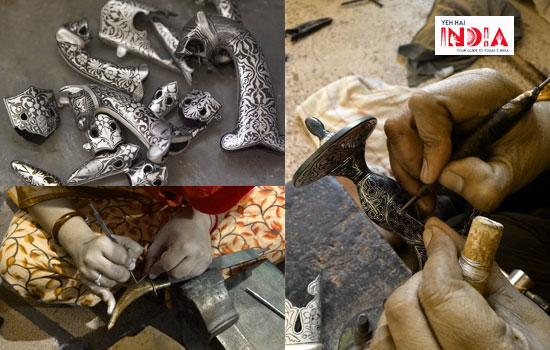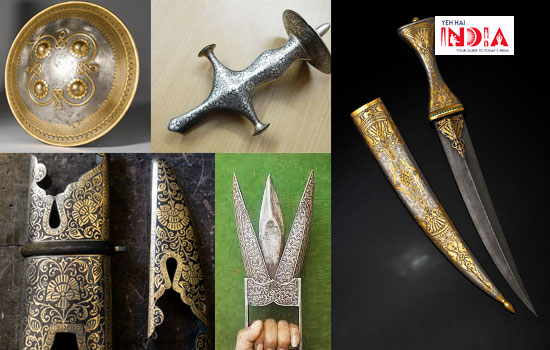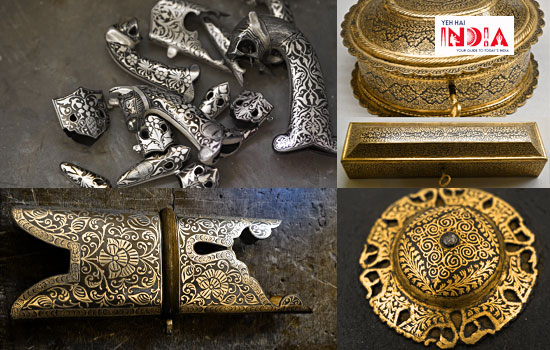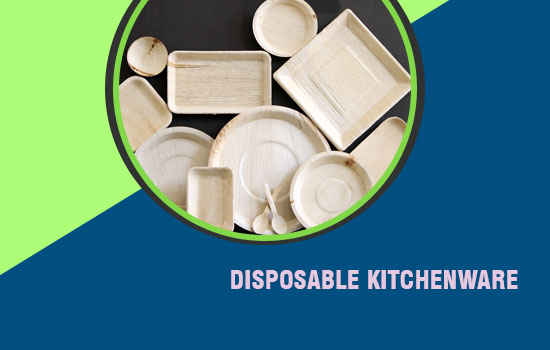Koftgari is the art of beautifying lethal instruments – a way of giving life to what brings death. Deep, right?
The term Koftgiri refers to the action of “beating” a pattern into iron, and decorating / carving the surface with elaborate chiseling of gold and silver. The craft is termed as “Koft”, the craftsmen are called “Koftgar” (a gilder) and the trade is known as “Koftgari”.
Koftgari Origin
Koftgari art originated in India, as a means to decorate arms and weaponry. The craft soon reached the kings of Rajasthan, where it prospered as foreign art….. until it became an inevitable part of the state’s own culture and lifestyle. The traditional weapon makers in Rajasthan of the time were called Sikligars, who started using this craft to create functional and graceful ornamented weaponry for the rulers and noblemen of the time.
Earlier, craftsmen were asked to use their imagination and create something that the royalties have never seen before….. The artisans sought inspiration from scenes of royal processions and hunting excursions and would translate them on to the weapons used in those occasions.
The Making – Koftgari
Primary raw materials include iron, gold, silver and secondary raw materials incldue machine oil, velvet/ cloth and coal. The iron for the work piece is sourced from the local Loha market in Hathipole, velvet from Udaipur and Silver and Gold wires, strips and bindis are sourced from market near the Ghanta Ghar (clock tower).
Tools like grinder (to polish iron work piece), chhaini (for hatching and cross hatching), pakkad (to grip the work piece), tankla (for the inlay of gold and silver wires), hopni (the tool for polishing the workpiece), hammer and cheerapatti (a tool to cut wire or patti) are used.
There are three main Koftgari techniques –

1. Tehen-shah or “Deep in-lay”
A pattern is carved into a blade and the silver wire is hammered into the undercut grooves. You can’t feel the pattern on the blade. This is simply called “inlay”.
2. Traditional Koftgari:
A cross-hatching pattern drawn on the blade with a sharp implement (“Sitar, a hard steel needle) followed by heating and pressing with a polish hakik stone. You can feel / see the pattern on the weapon.
3. Teh-tula
a gold or silver foil is hammered onto a cross-hatch or punched surface. This is more of an overlay art. You can feel the gold/silver on the objects. The pattern looks embossed.
Koftgari made Products

Nothing beats the grandeur of a Rajput…. their wedding is incomplete without a majestic display of elaborate weaponry, richly embellished with gold and silver.
- Daggers:
The Khanda sword in Rajputs is derived from the word khand meaning “to break, divide, cut, destroy”, and has a straight double-edged blade broadening from the hilt to the point, which is usually quite blunt.
- Hilts:
Hilts forms an important part of a Talwar, which were carried both as weapons, as well as a status symbol. These restrains the wrist in a very secure grip thereby restricting the ability to stretch it out for long strikes, instead optimizing its use for deep, and powerful cuts up close.
- Handles and Pommel:
Designing weapon parts, especially sword pommels, from cattle or camel bones, resembling animal, Gods or human heads are as old as a time-range between 1200—800 B.C. There are several reasons for these motifs to be used as it could be out of piety, as a mark of royalty, for identification in a war, as a token of appreciation for one’s valour upon defeating the opponent in a duel or a war.
- Scabbard:
The materials of the scabbard vary from leather, fabric, velvet to metal like gold and silver, according to the purpose like ceremonies, war, hunting and leisure; and the wielder of the weapon.
- Kada:
A kada is a simple iron bracelet, meant as a protective ring to guard the sword arm during battle. It eventually became an object of superstition as a quintessential part of Rajput costume, to be worn in ceremonies.
- Katari:
This weapon is a type of push dagger, and has a H-shaped horizontal hand grip due to which, the blade sits above the user’s knuckles, and was used by upper class Rajputs for hunting. With the katar, when one has to stab an opponent, the technique used is to punch instead of thrust.
Koftgari – Is it even relevant today?

Traditional weapons of warfare have become obsolete today, but they still hold an important part in the community of Rajputs, and can be seen during their events, in their full glory. Even though this craft is losing its essential purpose of creation, it is gaining an undermined vintage appreciation with the craftsmen giving new directions to this art, by ornamenting objects of utility, such as vessels, mirror frames and even jewellery.
With the craft becoming more and more scarce from a regular lifestyle…. it has found its way into objects catered more towards everyday use, starting with basic bowls and spoons. Going further, modern craftsmen try to incorporate the craft into belt buckles and in oxidised jewellery, kadas and jhumkis
Souvenir weapons like knives and daggers remain most popular, reinforcing the status of this magnificent craft in regal finery.
Conclusion –
A craft that originated around 500-700 years ago, vanished and restored by the Sikligar community, bought to Chittorgarh, Udaipur and presently still in Udaipur is being practiced by the 5th generation of artisans. Today, countries like Pakistan, China and USA are able to produce the base steel, but are still not able to perform the wire work of Koftgiri, thus, making this craft exclusive to Rajasthan.
Also Read – Leather Crafts of India










